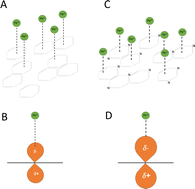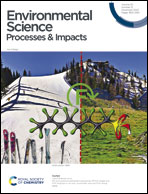Feedstock nitrogen content mediates maximum possible Pb sorption capacity of biochars†
Abstract
The use of biochar for the adsorption of contaminants from soil and water has received considerable interest due to biochar's high surface area, negative charge, and resistance to degradation. However, a knowledge gap still exists concerning the optimum selection of feedstocks and pyrolysis temperatures to maximise sorption capacity for metals. In this study, biochars were produced from 4 different feedstock materials (hay, wheat straw, coco coir, and pine bark) at 10 pyrolysis temperatures ranging from 300 °C to 750 °C, at 50 °C intervals. Batch sorption experiments were conducted to determine the maximum Pb sorption capacity for each biochar using the Langmuir model. The sorption isotherms fit the Langmuir model well (generally R2 > 0.7). The Langmuir maximum sorption capacity increased with an increase in pyrolysis temperature, according to a sigmoidal relationship. A sigmoidal model was fit to the data to derive the theoretical maximum possible sorption capacity obtainable from a feedstock. We observed a positive correlation between the nitrogen content of the feedstock and the theoretical maximum possible sorption capacity obtainable from the feedstock. This relationship highlights the importance of nitrogen content in feedstock to create biochars with a high Pb sorption capacity. It is possible that cation–π interactions with heterocyclic N structures are the primary mechanism for the sorption of Pb to these biochars, and this warrants further investigation.

- This article is part of the themed collection: Contaminant remediation and fate


 Please wait while we load your content...
Please wait while we load your content...